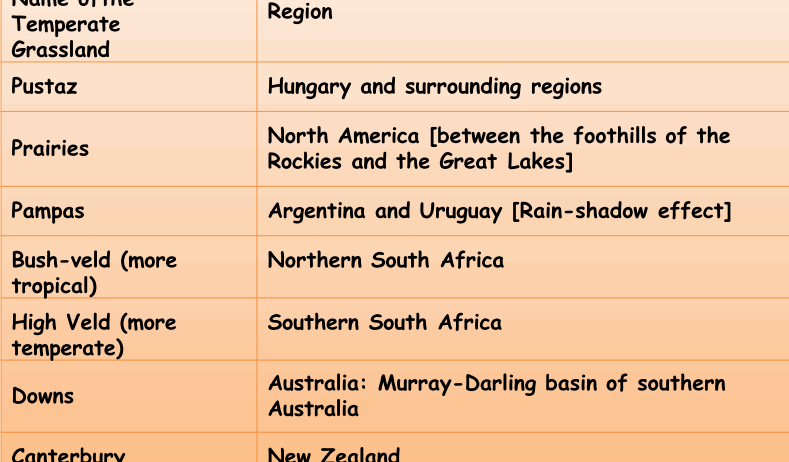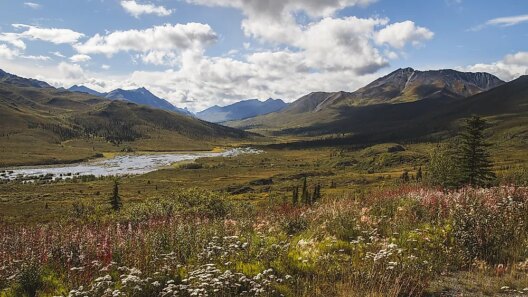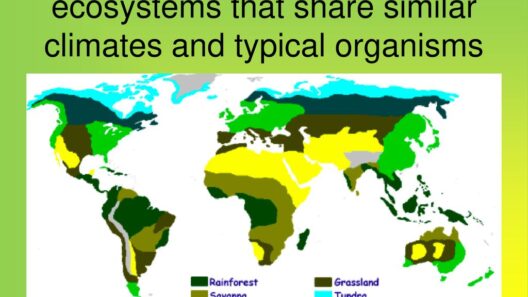Steppe climate, often perceived as the world’s verdant tapestry of semi-arid grasslands, weaves together intricate ecosystems that thrive under challenging conditions. This unique climate, characterized by its limited precipitation and pronounced temperature variations, beckons us to explore the complexities and wonders nestled within its folds. A steppe is not merely a barren expanse; it represents resilience amid adversity and serves as a crucial nexus for biodiversity, agriculture, and climate resilience.
The climate of steppe regions can be best understood as a mosaic of moderate temperatures and erratic rainfall, where summers can become sweltering and winters lightweight with snow. Typically found between the more temperate zones and arid deserts, steppes serve as an intermediary habitat. These sprawling landscapes are dominated by grasses, shrubs, and an array of wildflowers, which together create a vibrant tableau that is both dynamic and stoic.
The defining characteristic of a steppe climate is its precipitation amount, which generally ranges from 10 to 20 inches annually. This gentle trickle, often falling in the form of sporadic summer thunderstorms, fosters the growth of drought-resistant vegetation. The grasslands, nurtured by the scant rainfall, emerge as the predominant flora. Unlike lush forests that adorn environments abundant in moisture, the steppe offers an austere beauty, reminding us of nature’s clever adaptations.
The vegetation found in steppe climates thrives in diverse forms, reflecting the uniqueness of the region. Grasses such as feather grass, fescue, and bluestem dominate the landscape, while hardy shrubs like sagebrush complete the spectrum of flora. Here lies a captivating paradox: despite the seemingly inhospitable conditions, life flourishes in myriad forms, taking on distinctive adaptations to endure the harshness.
Temperature fluctuations are another hallmark of steppe climates. Summers can enjoy the warmth of the sun, with temperatures soaring to 100°F or more, while winters can reveal a stark contrast, with temperatures plummeting to below freezing. This oscillation creates an environment where species must exhibit remarkable adaptability. From the diminutive prairie dog to the majestic golden eagle, the fauna in these regions display a dramatic array of life strategies. Creatures have developed unique physiological and behavioral adaptations to navigate the extremes, ensuring survival in this unforgiving realm.
The biological tapestry of steppe regions is not simply composed of producers—grasses and plants thrive here. A cornucopia of herbivorous fauna, such as bison, antelope, and numerous rodents, contribute to the intricate web of life. These grazers play pivotal roles in maintaining the health of the grasslands, aiding in nutrient recycling and supporting a robust food web. The carnivores that hunt these herbivores—like wolves and foxes—further amplify the ecological complexity, ensuring balance in this vast arena of life.
While steppes are often celebrated for their ecological significance, they are equally vital for human agriculture. Historically, these landscapes have acted as the cradle for civilizations. The fertile soil, enriched by organic matter from decaying vegetation, has rendered these regions prime for farming activities. Crops such as wheat, barley, and millet flourish in the steppe’s diverse microclimates, providing sustenance to various populations.
However, the delicate balance of this environment hangs in the balance as climate change increasingly disrupts the status quo. Altered precipitation patterns, rising temperatures, and the encroachment of invasive species pose significant threats to these ecosystems. The resilience of steppe climate, once a stronghold against adversities of nature, faces unprecedented challenges in a rapidly changing world.
Human activities significantly exacerbate the pressures on steppe climates. Overgrazing, land conversion for agriculture, and industrial expansion have led to habitat fragmentation. This disruption not only threatens native species but also undermines the finely-tuned agricultural practices that have been passed down through generations. As steppes are stripped of their natural identity, we must reflect on our relationship with the environment, recognizing that the continued health of these ecosystems is intrinsically linked to our own survival.
In light of these challenges, the future of steppe climates rests in concerted conservation efforts. Emphasizing sustainable grazing practices, restoring damaged landscapes, and fostering biodiversity are crucial steps toward reinventing our stewardship. Local communities, often the stewards of these landscapes, must be empowered and educated to embrace practices that respect the vital ecological services provided by steppe ecosystems.
Embracing the steppe climate is about more than mere appreciation; it is an invitation to engage with the rhythms of nature and recognize the intrinsic value of these landscapes. The allure of steppe grasslands transcends their aesthetic qualities; they embody resilience, adaptability, and a profound connection to the Earth’s climatic tapestry. As we navigate the complexities of environmental change, the steppe stands as a reminder that even in the most challenging conditions, life endures.
In conclusion, the steppe climate encapsulates a unique realm teeming with life and ecological interactions. Its grasslands form a critical habitat, portraying a harmonious balance between flora and fauna, while also serving as agricultural linchpins. As we face the mounting impacts of climate change, understanding and preserving steppe ecosystems is not merely an environmental concern; it is an urgent moral obligation for future generations.






